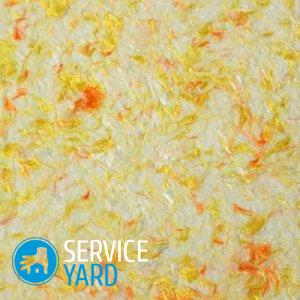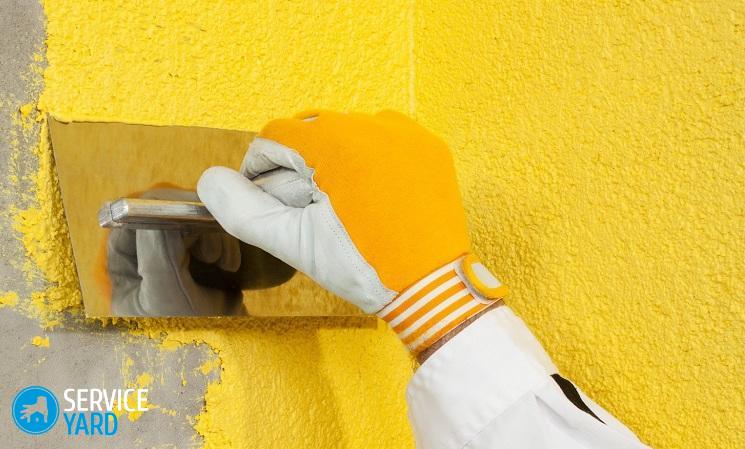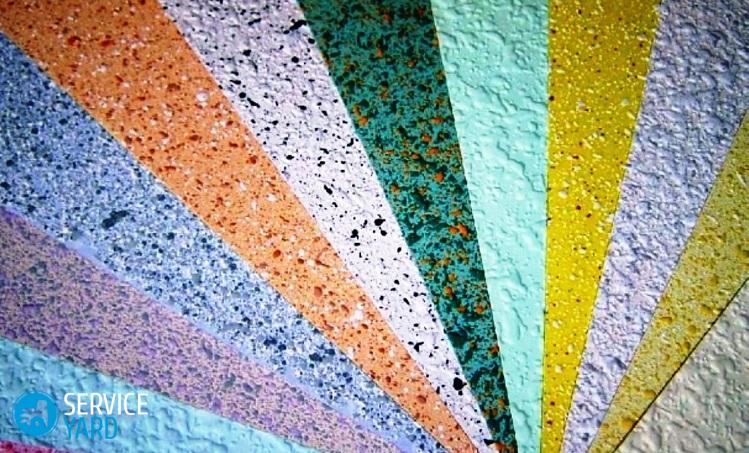How to glue liquid wallpaper?

Liquid wallpaper is a rather young material intended for decorative decoration of internal surfaces, which is rapidly gaining popularity. This is due to the fact that, due to its liquid consistency, the process of applying such a coating is much simpler than in the case of rolled wallpaper. In addition, such wallpapers are environmentally friendly and have a beautiful appearance. Therefore, if you decide to make the interior walls with this decorative coating, in this article we will tell you how to glue liquid wallpaper correctly, taking into account the characteristics of this material.
to contents ↑Main advantages
The peculiarity of liquid wallpaper is that they have a rather original texture, which cannot be achieved using other finishing materials. In addition, liquid wallpaper has a number of advantages:
- Environmental friendliness and purity of the material;
- Sound and heat insulation properties;
- High level of light fastness and elasticity;
- Antistatic properties;
- Wide color gamut;
- Ease of installation;
- A wide range of diverse textures;
- Long service life;
- Possibility of use on uneven surfaces;
Important! Liquid wallpaper can hide various defects, including irregularities in the surface of the wall.
- Lack of seams;
- If you need a little repair, this coating is ideally modifiable.
Due to the above characteristics, the scope of liquid wallpaper is quite extensive. They can decorate the walls of absolutely all residential premises, including children's rooms.
to contents ↑Important! Using liquid wallpaper, you can create a visual imitation of wood, stone, as well as other natural materials.
Composition of liquid wallpaper
Liquid wallpaper is in the form of a mixture, packaged in packages weighing 1 kilogram. The mixture consists of the following ingredients:
- Shredded cotton fibers;
- Hypoallergenic dyes;
- Liquid cellulose.
Before use, the powder is mixed with water or a ready-made diluted solution is purchased, which is sold in banks.
As for the rough wall, liquid wallpaper, as mentioned earlier, is applied to absolutely any type of surface, including such as:
- Drywall;
- Putty;
- Concrete;
- Wood;
- Plywood;
- Plaster;
- Fiberboard and MDF;
- Painted surface.
How to glue liquid wallpaper?
Before you start directly applying this decorative coating, it is necessary to prepare in advance the tools and materials you need during work.
You will need:
- Dry composition;
Important! In order to calculate the amount of dry material you need, you need to use the following formula in the calculations: the area allocated for the decorative coating, divide by the consumption of 1 pack of liquid wallpaper per square meter.
- Water;
- Large plastic container;
- Roller;
- Spatula or special gun designed to work with liquid wallpaper;
- Primer;
- Sandpaper;
- Brush.
Preparatory work
Before gluing liquid wallpaper on the wall, the surface must be preliminarily prepared. The list of preparatory work consists of the following stages:
- Removing the old decorative coating.
- Checking the wall surface for the presence of various nails, as well as other foreign objects. If any, they should be removed immediately.
- Inspection of the wall for mold.If traces of the fungus were detected, the surface of the wall must be treated with an antifungal agent.
- Sanding the surface with coarse sandpaper.
- Primer application. Once it is completely dry, you can proceed to the direct wallpapering of the walls.
The process of preparing the solution and its subsequent application
Despite all its simplicity, the process of pasting walls with liquid wallpaper should be taken with all responsibility, since the finished result completely depends on this. In order to eventually get a smooth coverage, you must always adhere to the following sequence of actions:
- Prepare a solution. To do this, mix in room temperature water and a dry mixture. Kneading itself can occur either manually or using a construction mixer. As soon as the solution becomes homogeneous, it must be covered with plastic wrap and allowed to stand for several minutes. The finished solution should be easily applied to the surface of the wall and in its consistency resemble thick sour cream.
Important! Mixing the solution is necessary, based on the recommendations specified by the manufacturer.
- Using a spatula, apply the solution in a small portion to the wall and smear it with a thin layer.
Important! The layer of liquid wallpaper on the surface of the wall should be no more than 5 millimeters. If it is thicker, in this case it will take more time until it dries completely, and there is also a risk of cracking.
- Smooth out the freshly treated area with a roller.
Important! If the mixture is uneven and cannot be leveled with a roller, it can be removed from the surface of the wall with a spatula previously moistened with water, after which it can be applied again.
- At this stage, you can optionally create various relief patterns. To do this, sweep the embossed roller along the walls that are not yet dry.
- Once the decorative coating has been completed, allow the surface to dry completely. On average, liquid wallpaper dries for about 1-3 days at a temperature of 10 degrees.
- Open already dry walls with a layer of transparent varnish.
Stock footage
As you can see, sticking liquid wallpaper with your own hands is not difficult. The most important thing is to adhere to all the above tips of our experts. We hope that they will help you in creating an elegant and original interior without much physical effort and financial costs.
- How to choose a vacuum cleaner taking into account the characteristics of the house and coatings?
- What to look for when choosing a water delivery
- How to quickly create comfort at home - tips for housewives
- How to choose the perfect TV - useful tips
- What to look for when choosing blinds
- What should be running shoes?
- What useful things can you buy in a hardware store
- Iphone 11 pro max review
- Than iPhone is better than Android smartphones





